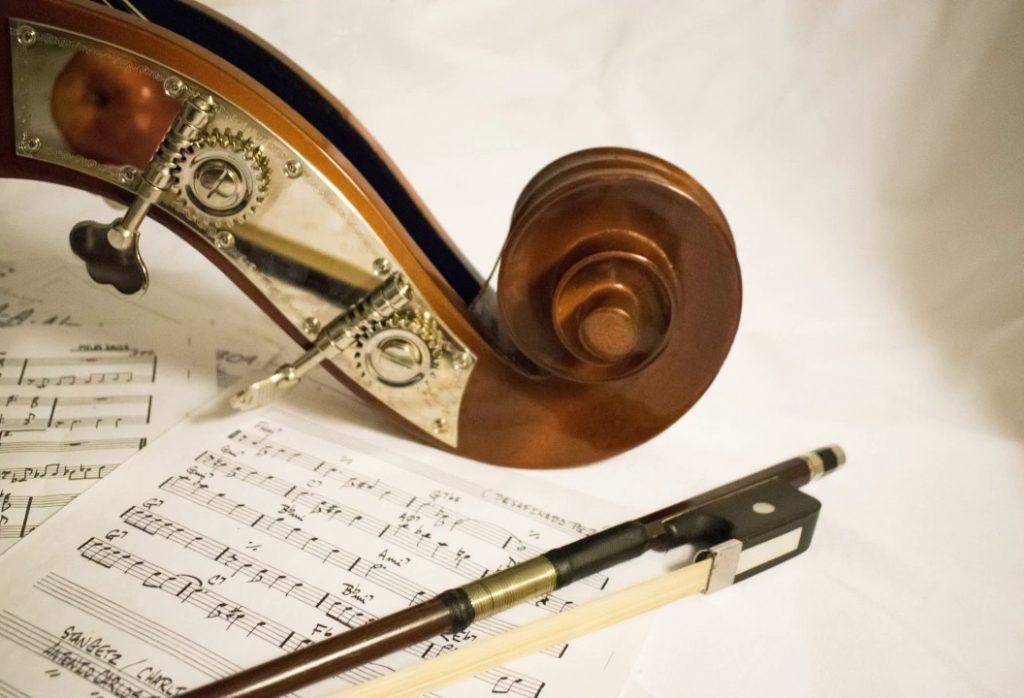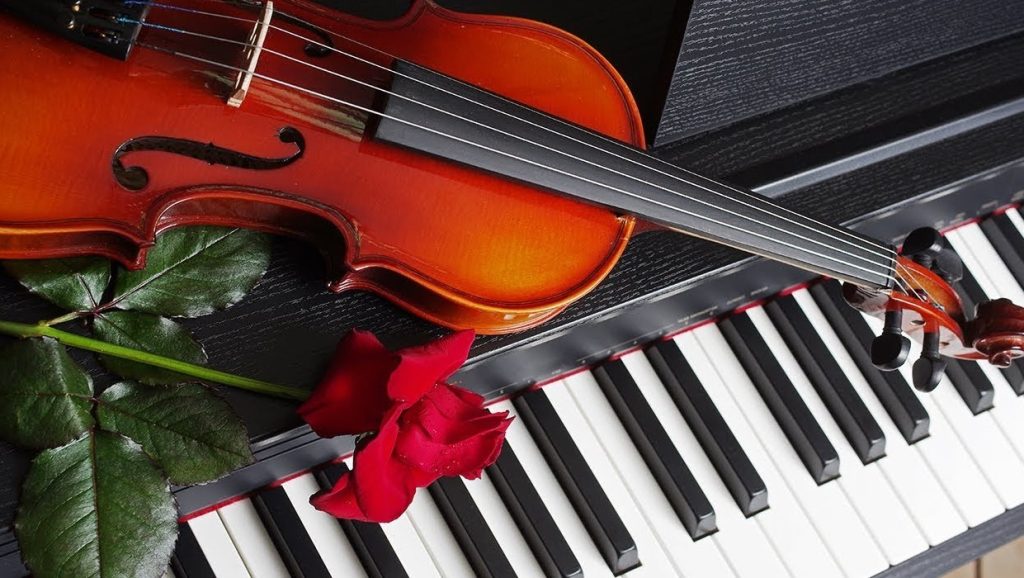
Visits: 133
Regardless of whether you are a beginner, intermediate or advanced student, you can find the right music for you to relax and study. From Beethoven’s Piano Sonata to Bach’s The Well Tempered Klavier of 48 Preludes and Fugues, you’ll find a wide variety of classical music to choose from.
Bach’s The Well Tempered Klavier of 48 Preludes and Fugues
During four weeks of imprisonment in Weimar in 1717, Johann Sebastian Bach began writing his famous Well-Tempered Clavier. He composed 48 preludes and fugues in all major and minor keys. This collection of pieces, referred to as “The Well-Tempered Clavier,” is a valuable model for performers. Throughout the centuries, all great composers have learned from this work.
The Well-Tempered Clavier is divided into two volumes, each comprising 24 preludes and fugues. The first book is addressed to musical youth, while the second is for the advanced player. Each piece is accompanied by a commentary.
The title of the work refers to the equal tempered tuning system that divides the octave into twelve equal intervals, rather than the meantone tuning that divides it into sixteen. This allowed for more modulation freedom and better chromaticism.
The Well-Tempered Clavier represents the core of baroque keyboard music. Bach’s compositions demonstrate the practicality of the equal tempered keyboard. It also served as a promotional tool for the equal tempered tuning method.
Bach’s preludes are designed to be dance-like. Each begins with a stretto, which demonstrates the subject in a different voice. The prelude is improvisatory and embellishes over a fixed harmonic pattern.
The Fugue is written in quadruple counterpoint. The subject creeps from F-sharp to C-sharp. The chromaticism is strong and there is an element of solemnity. The melody is supple and shapely. The fugue ends with a pedal point.
Bach’s preludes and fugues are less academic than other contrapuntal music. They are intended as pedagogical exercises for keyboard players. Although the technique is simple, the content is rich and varied. The pieces are arranged according to major and minor keys, and each is preceded by an improvisatory prelude.
Frederic Chopin’s nocturne
‘Chopin’s nocturne’ is one of the most famous and popular pieces by the 19th century composer. It has become a staple in piano repertoire. The piece is often played at night, and can be heard in a wide range of environments. It is a very simple piece, but it is full of feeling.
Its name is derived from the phrase ‘nocturne’, which means ‘night’. Chopin’s Nocturnes are a series of short, piano works that were written during the Romantic era. They were inspired by John Field, who had already created a genre of nocturnes. Throughout his lifetime, Chopin continued to be influenced by Field’s work.
A Chopin nocturne in E flat major has a song-like melody in the right hand, which creates emotional depth. The melody is accompanied by a rhythmic accompaniment in the left hand. It has a tempo of andante. This tempo helps create a lilting improvisation feel, which is characteristic of the style.
Another nocturne is in G Minor, which is also a very beautiful composition. The melody is reminiscent of the romanticism of Franz Liszt. It is a poem of gentle kindness. Its ending is a subtle coda.
Chopin was a very good improvisor. His playing was noted by dramatist Ernest Legouve. His performance style was very delicate, and sometimes he didn’t grab the attention of the larger concert audience.
A great pianist who interprets the music of Chopin is Maria Joao Pires. Others include Krystian Zimerman, Arthur Rubinstein, Martha Argerich, and Vladimir Ashkenazy.
In addition to his famous nocturnes, Frederic Chopin wrote over 200 solo piano works, including waltzes and mazurkas. His work was deeply shaped by his native country, Poland.
Mozart’s concerto
Despite the many concertos composed by Mozart, the piano concerto no. 23 is by far the most popular. Its enchanting rhythms make it an ideal brain-trainer. The recitative is performed with exceptional dramatic impact. The well-trained ensemble gives a solid performance.
A modern, historically informed pianist plays a classic, albeit understated, performance. The cast includes several of the best tenors around. The orchestrations are a delight.
The riffs and rhythms in the first and last movements are muscular. The strings and woodwinds are balanced well, and the harpsichord accompaniment in the recitatives is superb.
The Mosaiques Quartet has a clear, expressive style, which is reminiscent of the famous Mozart quartets. The recording is made with care and detail. They have recorded ten mature Mozart quartets. The sound is clear, and the recording is a fine example of classical acoustics.
The B flat major K. 174, written when Mozart was just seventeen, is a pleasant work. The first movement contains a memorable Andante, and the Minuet is sweet and swoony.
The Mosaiques Quartet has tuned the instruments to be period-correct, and the result is a pleasing performance. The orchestration is balanced, and the ensemble played with an unusual amount of rubato. The adagio is a flurry of activity, with a little more than a hint of vibrato.
The Boston Symphony Orchestra’s recording of the Mozart Requiem has a nice balance of warmth and tenderness. The tempos are admirably judged, and the choral accompaniment is clean in texture. The cast is a little uneven, but the performance is a good one.
The Boston Symphony Orchestra also performed a performance of the Mozart piano concerto no. 23, a work that requires the skill of musicians at the highest level. The VPO accompanied Wolfgang Bohm and the soloists, and the results are very satisfying.
Beethoven’s Piano Sonata
Amongst the most impressive works by Beethoven is his Piano Sonata. A multi-movement composition for solo piano, it is also the most complete of the composer’s output. Its impact on music has been profound. It has been studied, recorded, and debated, making it an important part of classical music.
Its name, ‘Pastoral’, refers to its simple nature. Its first movement opens with a low D pedal point in the bass. This is reminiscent of the bagpipe drone of the country scenes. It then opens with a minor-key theme, which echoes a few bars later in the Andante.
The piano sonata has been recorded many times. Most notably, Artur Schnabel, one of the most celebrated pianists of his time, performed the cycle in the 1920s and 1930s. He was credited with making the Beethoven sonatas popular.
The sonata in C major is the most famous of all. Its opening is lilting, and its middle is quite stressy. The first movement of the sonata in D major, which is also titled “Almost a Fantasy,” is a little more complex. It includes an unusual scherzo and a second fugue. The third movement is the most technically demanding of all, but it requires a Presto agitato tempo.
The most notable feature of the sonata is its use of a pedal point in the bass. It is a technique used by composers to give greater volume to their music. It is usually used in the first movement of a sonata. In this case, Beethoven used it to indicate a climax.
Another interesting note is the use of the E-flat. In this sonata, the highest note is the E-flat”’. This is the almost highest note that Beethoven played on his piano. It is also used to indicate a diminuendo.
Gustav Holst’s Venus
Originally titled Seven Pieces for Large Orchestra, Gustav Holst’s The Planets is a seven-movement piece. Each movement is based on the themes of a particular planet, with each movement designed to convey the idea and emotion associated with the planet. The Planets reflects Holst’s universality.
The Planets was first performed publicly on November 22, 1919. Vally Lasker and Nora Day performed a two-piano version for visiting conductors.
In 1919, Holst had begun to study astrology with Clifford Bax. He was also fascinated by Hindu philosophy and Sanskrit literature. He wrote several works on Indian religious texts. However, these did not get much attention. He was depressed by the lack of success as a composer. Eventually, he ceased his activities. During his last days, he purchased the score to The Planets.
During his holiday in Majorca in 1913, Holst came up with an idea for a work inspired by the planets. He wanted to set hymns from the Rig Veda. He decided to learn Sanskrit so that he could translate the lyrics. He bought the score and began to work on it.
Holst had a strong interest in Eastern music, particularly the music of India. He was particularly drawn to mysticism. He incorporated these features into dozens of settings of Indian religious texts. His interest in astrology grew. In the summer of 1914, he began sketching ideas for Jupiter, Mars, and Uranus. He also sketched Saturn before the start of World War I.
The Planets is a major influence on sci-fi movie music. Its rhythmic complexity is unique among Western works. It is a challenging piece to follow. There are several movements that have been transcribed from other composers’ works.
Originally posted 2022-12-11 13:10:18.


